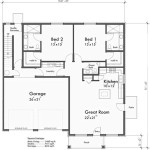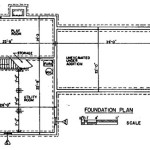Plans for a cat house refer to the blueprints or guidelines that outline the design, materials, and construction methods for a structure intended to provide shelter and comfort for a feline companion. These plans may vary in complexity, from basic designs suitable for amateur builders to elaborate blueprints for advanced construction projects.
The primary purpose of a cat house is to provide a dedicated space for cats to rest, sleep, and feel secure. They can also serve as a safe haven during inclement weather, offering protection from the elements. Cat houses can be placed indoors or outdoors, depending on the individual cat’s preferences and the climate.
Depending on the design, cat houses can incorporate various features to enhance their functionality. These features may include elevated platforms for climbing and scratching, insulated walls for warmth retention, and multiple chambers to accommodate multiple cats or provide separate spaces for different activities.
When considering plans for a cat house, there are several key points to keep in mind:
- Size and space requirements
- Materials and durability
- Ventilation and insulation
- Access and entry points
- Safety and security features
- Customization and aesthetics
- Indoor vs. outdoor placement
- Cleaning and maintenance
- Cost and budget
Taking these factors into account will help ensure that the cat house meets the specific needs of your feline friend and provides a comfortable and secure shelter for years to come.
Size and space requirements
Determining the appropriate size and space requirements for a cat house is crucial to ensure the comfort and well-being of your feline companion. Several factors should be considered when making this determination:
- Cat’s size and breed: Larger breeds, such as Maine Coons or Ragdolls, will require a more spacious cat house than smaller breeds, such as Siamese or Singapura. Consider the cat’s height, length, and weight when selecting the dimensions of the house.
- Number of cats: If you have multiple cats, you will need a cat house that is large enough to accommodate all of them comfortably. A good rule of thumb is to provide at least 2 cubic feet of space per cat.
- Activity level: Cats that are active and playful may prefer a larger cat house with plenty of room to move around. Less active cats may be content with a smaller, cozier space.
- Purpose of the cat house: If the cat house is intended for use as a primary shelter, it should be large enough for the cat to sleep, eat, and move around comfortably. If the cat house is intended for use as a retreat or hiding place, it can be smaller.
In general, a cat house should be at least 24 inches long, 18 inches wide, and 18 inches high. However, it is always better to err on the side of caution and choose a cat house that is slightly too large rather than too small.
Materials and durability
The materials used to construct a cat house play a crucial role in its durability, weather resistance, and overall lifespan. When selecting materials, consider the following factors:
- Wood: Wood is a popular choice for cat houses due to its durability and natural aesthetic. Cedar and redwood are particularly resistant to rot and decay, making them ideal for outdoor use. However, wood requires regular maintenance, such as painting or staining, to protect it from the elements.
- Plastic: Plastic cat houses are lightweight, easy to clean, and weather-resistant. They are also relatively inexpensive and come in a variety of colors and styles. However, plastic can be less durable than wood and may not provide as much insulation.
- Metal: Metal cat houses are durable and weather-resistant, making them a good choice for outdoor use. However, metal can be heavy and may rust if not properly coated. Additionally, metal cat houses can become very hot in the sun and very cold in the winter.
- Fabric: Fabric cat houses are soft and comfortable, but they are not as durable as wood, plastic, or metal. They are also not weather-resistant and should only be used indoors.
The best material for a cat house will depend on your specific needs and preferences. If you are looking for a durable and weather-resistant cat house that will last for many years, wood or plastic are good options. If you are looking for a lightweight and easy-to-clean cat house, plastic is a good choice. If you are looking for a cat house that is soft and comfortable, fabric is a good option. However, keep in mind that fabric cat houses are not as durable as other materials.
Ventilation and insulation
Proper ventilation and insulation are essential for maintaining a comfortable and healthy environment inside a cat house. Ventilation allows fresh air to circulate, preventing the buildup of moisture and odors. Insulation helps to regulate the temperature inside the cat house, keeping it warm in the winter and cool in the summer.
- Ventilation: Cat houses should have adequate ventilation to prevent the buildup of moisture and odors. This can be achieved by installing vents or windows in the walls or roof of the cat house. Vents should be placed near the top of the cat house to allow warm air to escape. Windows can be placed at any height, but they should be large enough to allow for good airflow.
- Insulation: Cat houses should be insulated to help regulate the temperature inside the house. This is especially important for cat houses that are located outdoors. Insulation can be installed in the walls, roof, and floor of the cat house. There are a variety of insulation materials available, so be sure to choose one that is appropriate for your climate and the type of cat house you are building.
- Combination of ventilation and insulation: The combination of ventilation and insulation is essential for creating a comfortable and healthy environment inside a cat house. Proper ventilation will help to prevent the buildup of moisture and odors, while insulation will help to regulate the temperature inside the house. By following these tips, you can ensure that your cat house is a safe and comfortable place for your feline friend to rest and relax.
- Importance of using appropriate materials: When choosing materials for your cat house, be sure to select materials that are appropriate for your climate. For example, if you live in a cold climate, you will need to use insulation that is rated for cold weather. You should also choose materials that are durable and easy to clean.
By following these tips, you can ensure that your cat house is a well-ventilated and insulated space that will provide your feline friend with a comfortable and healthy place to rest and relax.
Access and entry points
Access and entry points to a cat house are important considerations to ensure that your cat can easily enter and exit the house, and that the house is easy to clean and maintain.
- Size and location of the entrance: The entrance to the cat house should be large enough for your cat to comfortably enter and exit. The entrance should also be located in a convenient location, such as near the ground or on a raised platform.
- Type of entrance: There are a variety of different types of entrances that you can choose for your cat house, such as a simple hole, a flap door, or a tunnel. The type of entrance that you choose will depend on your cat’s preferences and the location of the cat house.
- Multiple entrances: If you have multiple cats, or if your cat is particularly active, you may want to consider providing multiple entrances to the cat house. This will help to prevent congestion and allow your cat to escape if necessary.
- Safety and security: The entrance to the cat house should be designed to prevent predators from entering the house. This can be achieved by using a flap door or a tunnel that is too small for predators to enter.
By following these tips, you can ensure that your cat house is easy for your cat to access and exit, and that it is safe and secure.
Safety and security features
Safety and security features are important considerations when designing a cat house, especially if the house will be located outdoors. These features can help to protect your cat from predators, the elements, and other hazards.
- Sturdy construction: The cat house should be constructed of sturdy materials that can withstand the elements and potential predators. The walls and roof should be thick enough to provide insulation and protection from the cold, wind, and rain. The entrance to the cat house should be small enough to prevent predators from entering, but large enough for your cat to easily enter and exit.
- Secure door: The door to the cat house should be secure and difficult for predators to open. A flap door or a tunnel is a good option, as it allows your cat to enter and exit the house easily, but prevents predators from entering.
- Raised platform: If the cat house is located outdoors, it should be placed on a raised platform to protect it from moisture and flooding. The platform should be high enough to keep the cat house dry, but low enough for your cat to easily jump onto.
- Non-toxic materials: All of the materials used to construct the cat house should be non-toxic and safe for your cat. This includes the paint or stain used to finish the house.
By following these tips, you can help to ensure that your cat house is a safe and secure place for your feline friend to rest and relax.
Customization and aesthetics
Customization and aesthetics are important considerations when designing a cat house, as they can affect the overall appearance and functionality of the house. There are many different ways to customize a cat house, such as by painting it, adding decorative elements, or choosing unique materials.
When customizing a cat house, it is important to keep your cat’s preferences in mind. For example, if your cat likes to scratch, you may want to add a scratching post to the house. If your cat likes to climb, you may want to add a ramp or platform to the house. You can also choose a color scheme and design that matches your cat’s personality and the dcor of your home.
In addition to customization, you should also consider the aesthetics of the cat house. The house should be visually appealing and complement the surrounding environment. If the cat house is located outdoors, you may want to choose a design that blends in with the natural surroundings. If the cat house is located indoors, you may want to choose a design that matches the dcor of your home.
There are many different resources available to help you customize and decorate a cat house. You can find inspiration online, in magazines, or at your local pet store. You can also hire a professional to design and build a custom cat house for you. No matter how you choose to customize your cat house, make sure that it is a place that your cat will love to spend time in.
By following these tips, you can create a cat house that is both functional and stylish, and that your cat will love.
Indoor vs. outdoor placement
One of the first decisions you will need to make when planning a cat house is whether to place it indoors or outdoors. Both indoor and outdoor cat houses have their own advantages and disadvantages, so it is important to consider your cat’s needs and lifestyle before making a decision.
Indoor cat houses are a good option for cats that are indoor-only or that spend most of their time indoors. Indoor cat houses provide a safe and comfortable place for cats to sleep, hide, and play. They can also be used to create a designated space for your cat’s litter box and food and water bowls.
Outdoor cat houses are a good option for cats that spend a lot of time outdoors. Outdoor cat houses provide shelter from the elements, such as rain, wind, and snow. They can also provide a safe place for cats to sleep and hide from predators.
When choosing between an indoor or outdoor cat house, there are a few things to keep in mind. First, consider your cat’s personality and lifestyle. If your cat is shy or timid, an indoor cat house may be a better option. If your cat is active and playful, an outdoor cat house may be a better option. Second, consider the climate in your area. If you live in a cold climate, you will need to choose an outdoor cat house that is insulated and weatherproof. Third, consider the size of your yard. If you have a small yard, an indoor cat house may be a better option. If you have a large yard, an outdoor cat house may be a better option.
Ultimately, the best way to decide whether to place a cat house indoors or outdoors is to consider your cat’s individual needs and preferences.
Cleaning and maintenance
Regular cleaning and maintenance are essential to keep your cat house in good condition and to prevent the buildup of dirt, debris, and bacteria. The frequency of cleaning will depend on how often your cat uses the house and the environment in which it is placed. However, it is generally recommended to clean the cat house at least once a week, and more often if it is used frequently or is located in a dusty or humid environment.
To clean the cat house, start by removing all of the bedding and toys. Then, vacuum or sweep the inside of the house to remove any loose dirt or debris. Next, wipe down the inside of the house with a damp cloth and a mild disinfectant. Be sure to rinse the cloth thoroughly after cleaning to remove any residual disinfectant. Once the inside of the house is clean, allow it to dry completely before replacing the bedding and toys.
In addition to regular cleaning, the cat house should also be inspected periodically for any damage. This is especially important if the cat house is located outdoors. If you find any damage, such as holes or tears in the fabric or cracks in the wood, repair it immediately to prevent further damage and to keep your cat safe.
By following these simple tips, you can keep your cat house clean and in good condition for many years to come.
Regular cleaning and maintenance are essential to ensure that your cat house remains a safe and comfortable place for your feline friend.
Cost and budget
The cost of building a cat house will vary depending on a number of factors, including the size of the house, the materials used, and the complexity of the design. However, it is possible to build a simple cat house for a relatively low cost. Here are a few tips for saving money on your cat house project:
- Use recycled materials: One of the best ways to save money on your cat house is to use recycled materials. You can find used wood, pallets, and other materials at your local hardware store or lumberyard. You can also ask friends and family members if they have any spare materials that you can use.
- Build a simple design: The more complex the design of your cat house, the more it will cost to build. If you are on a budget, it is best to stick to a simple design. You can find many free cat house plans online or in books.
- Do it yourself: If you are handy, you can save money by building the cat house yourself. However, if you are not comfortable with DIY projects, you can hire a contractor to build the house for you.
- Shop around for materials: Before you purchase any materials, be sure to shop around for the best prices. You can often find discounts on materials at hardware stores and lumberyards.
By following these tips, you can save money on your cat house project without sacrificing quality.










Related Posts








